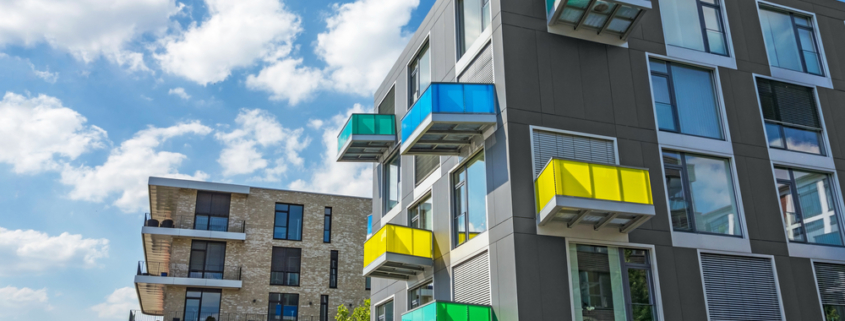Common Deck Defects That Deck Inspectors Look For
Deck inspectors in Southern California play a crucial role in ensuring the safety and structural integrity of decks, balconies, and elevated walkways. Regular inspections help identify potential issues before they become major safety hazards. In this article, we’ll delve into some of the common deck defects that deck inspectors look for, shedding light on the importance of thorough and routine inspections.
Deck Inspectors & Substandard Materials and Construction
One of the primary areas of concern for deck inspectors is the quality of materials used in the construction of the deck and the workmanship that went into it. Substandard materials and poor construction can lead to a host of issues, including instability and safety hazards.
1. Rotting Wood
Wood is a common material used in deck construction, and it’s prone to rot if not adequately protected. Deck inspectors look for signs of wood decay, including soft spots, discoloration, and fungus growth. Rotting wood can compromise the structural integrity of the deck, leading to potential collapse.
2. Inadequate Fasteners and Connectors
Decks must be securely fastened to the building and supported by appropriate connectors. Inspectors check for loose or missing screws, nails, bolts, and anchors. Inadequate fastening can result in a deck pulling away from the building or collapsing altogether.
3. Improper Ledger Attachment
The ledger board, which connects the deck to the structure of the building, is a critical component. Inspectors ensure it is properly attached, flashed, and sealed to prevent water infiltration and ledger rot, a common issue that can lead to deck failure.
Deck Inspectors & Structural Issues
The structural integrity of a deck is paramount, and inspectors carefully assess various structural elements for any signs of wear and damage.
1. Rot or Decay in Support Posts and Beams
Support posts and beams are fundamental to a deck’s stability. Inspectors look for any signs of rot or decay in these components, which can compromise the deck’s load-bearing capacity.
2. Cracked or Split Joists
Joists are responsible for distributing the weight and load of the deck. Cracked or split joists can weaken the deck’s structure and may lead to a sagging or uneven deck.
3. Inadequate Railings and Balusters
Deck railings and balusters are essential for safety. Inspectors check for loose, damaged, or improperly spaced railings and balusters. Any deficiencies in these components can pose a safety risk, especially for homes with children or pets.
Deck Inspectors & Safety Hazards
Deck inspectors are vigilant in identifying safety hazards, as the primary goal of inspections is to prevent accidents and injuries.
1. Loose or Damaged Stairs and Handrails
Stairs are high-traffic areas that must be stable and secure. Inspectors look for loose or damaged treads, risers, and handrails. Unstable stairs can lead to trips and falls.
2. Slippery Surfaces
Decks can become slippery when exposed to the elements, making them unsafe. Inspectors check for signs of slippery surfaces, including the buildup of algae or mildew. Proper cleaning and maintenance are essential to prevent slip and fall accidents.
3. Deck Inspectors & Electric and Fire Hazards
Decks with electrical outlets or appliances require careful inspection. Inspectors ensure that all wiring and components are properly installed and protected from the elements. Electrical issues can pose fire hazards and other dangers.
Deck Inspectors & Code Compliance
To ensure the safety of deck users, inspectors must ensure that the deck complies with local building codes and regulations.
1. Guardrail and Baluster Height and Spacing
Local building codes specify the minimum height and spacing requirements for deck guardrails and balusters. Inspectors check these dimensions to ensure compliance with safety regulations.
2. Weight-Bearing Capacity
Decks are designed to hold a specific amount of weight. Inspectors assess the deck’s load-bearing capacity to ensure it meets the design requirements and can safely accommodate intended uses.
3. Flashing and Water Drainage
Proper flashing and water drainage are vital to prevent water infiltration and rot. Inspectors verify that the deck has the necessary flashing and drainage systems in place to protect against water damage.
Deck Inspectors Conclusion
In conclusion, deck inspectors play a critical role in identifying and addressing common deck defects that can compromise safety and structural integrity. Regular inspections are essential to maintain the longevity and safety of your deck, ensuring that it remains a safe and enjoyable space for you and your family. If you own a deck in Southern California, it’s wise to schedule routine inspections to catch and address potential defects before they become major issues.
Looking for a professional deck inspection service in Southern California? Click here!
Deck Inspectors for Southern California is happy to offer our services in Los Angeles, Orange County as well as San Diego and all Southern California surrounding areas like: Glendale, Pasadena, Burbank, Santa Monica, Anaheim, Temecula, Vista, Escondido, Carlsbad, and El Cajon



